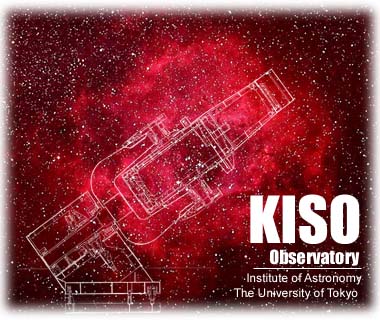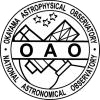|
SMOKA Okayama Photographic Plate Archive Search
Overview
Using SMOKA Okayama Photographic Plate Archive Search,
you can search Digitized plate data of Okayama 188cm telescope
by Plate ID, Plate Size, a position (specified by R.A. and Dec (J2000) and Radius),
DATE-OBS (observation date), Filter, Object Name, and Emulsion.
This page provides the detailed information on input/output format of search/result page.
Please click the links below for specific information for Okayama Photographic Plate archive.
Scanning Equipment and Software
- Scanner: EPSON GT-X980 flatbed scanner
- Software: EPSON SCAN (transparency scanning mode)
Scanning Methodology
- Photographic plates placed directly on scanner glass surface
- Orientation: Glass side down, emulsion side up
Known Issues
Image Distortion
Greater distortion occurs in the sub-scanning direction (line CCD movement) compared to the main scanning direction (line CCD array direction) due to flatbed scanner characteristics.
Focus Alignment
The focal plane is not aligned with the emulsion surface. The GT-X980's transparency scanning mode expects samples to be positioned 2.5mm above the glass surface, while photographic plate glass thickness is approximately 1mm, resulting in focus discrepancy.
Newton Rings
Optical interference patterns (Newton rings) are visible in many images due to the gap between the plate glass surface and scanner glass surface.
Image Processing Variability
Dynamic range and gamma values vary across images, making it impossible to determine actual plate transmission rates or photographic density values.
Data Format Specifications
- Saved as 8-bit depth (lower 8 bits only) despite 16-bit specification
- Information loss in bright star centers
Search Form Information
Input field format
- Plate ID
- The Plate ID is a combination of the plate size, 4 digit sequential number, and a branch number represented by an alphabet letter (A, B, C).
- Plate Size
- The classification of plate size is as follows:
NL: 164 mm x 164 mm (60 arcmin x 60 arcmin)
NS: 82 mm x 107 mm (31 arcmin x 46 arcmin)
- R.A. and Dec
- The equatorial coordinates of the celestial region where you want to search.
A number of formats are accepted for the R.A. and Dec. Here are some examples:
R.A. Dec
12h34m56.7s -76d54m32.1s
12h 34m 56.7s -76d 54m 32.1s
12h34m56s -65d43m21s
12h 34m 56s -65d 43m 21s
12h34.5m 54d32.1m
12h 34m +54d 32m
12.5h 54.3d
12h +54d
12h34m56.7 -76d54m32.1
12h 34m 56.7 -76d 54m 32.1
12h34m56 -65d43m21
12h 34m 56 -65d 43m 21
12h34.5 54d32.1
12h 34.5 54d 32.1
12h34 +54d32
12h 34 +54d 32
12:34:56.7 -76:54:32.1
12:34:56 65:43:21
12:34.5 +54:32.1
The string is interpreted as decimal degrees unless it includes a delimiter, 'h' or ':'.
123.4 54.3
123 -54
Spacing is not important.
You can delimit the hours/degrees, minutes, and seconds with
h/d, m, or colons(:). Without the delimiters, the value is
interpreted as decimal degrees.
- Radius
- How far around the search position you would like to search, in arcminutes.
This field is ignored, when range operator is not used in R.A. or Dec field.
- DATE-OBS (Observation Date)
- The date of the observation in Universal Time (UT).
The date can have any of the following formats:
1975-04-25 (yyyy-mm-dd)
You can use a range operator; for example,
expression search range
2000-12-15..2000-12-31 2000-12-15 0hUT <= (obs date/time) < 2000-12-31 24hUT
>=2001-01-01 2001-01-01 0hUT <= (obs date/time)
>2001-01-01 2001-01-02 0hUT <= (obs date/time)
<=1998-06-30 (obs date/time) < 1998-06-30 24hUT
<1998-06-30 (obs date/time) < 1998-06-30 0hUT
If no range operator is used, the search range is as follows:
2000-12-15 2000-12-15 0hUT <= (obs date/time) < 2000-12-15 24hUT
- Filter
- You can search for plates that use a specific filter.
Select NULL to search for plates without any filter.
None (the state where nothing is selected) indicates no filter is specified.
- Emulsion
- You can search for plates that use a specific emulsion type.
Select NULL to search for plates without any emulsion.
None (the state where nothing is selected) indicates no emulsion is specified.
Output option
- Limit Num of Results
-
Select a limit number of results to display at once.
Output columns
- BMP
-
When the BMP file corresponding to each FRAME_ID exists, the checkbox is appeared.
- FITS
-
When the FITS file corresponding to each FRAME_ID exists, the checkbox is appeared.
- FRAME_ID
-
FRAME_ID is the unique identifier for an observational data.
The value is a combination of "OKP" , "S" or "L" representing plate size, 4 digit number of PLATE ID, and the branch number of PLATE ID (1, 2, 3 corresponding to suffixes A, B, C respectively) as the last single digit.
BMP file name is generated by FRAME_ID + ".bmp".
FITS file name is generated by FRAME_ID + ".fits".
- DATE_OBS (Observation Date)
- The date of the observation in Universal Time (UT).
- PLATEID
- The Plate ID is a combination of the plate size, 4 digit sequential number, and a branch number represented by an alphabet letter (A, B, C).
- BMP_SIZE
-
The size of a BMP file in MB.
- FITS_SIZE
-
The size of a FITS file in MB.
- RA2000
- Celestial coordinates of Right Ascension in J2000.0.
The value is displayed in units of hours, minutes, and seconds (HH:MM:SS.SSS).
- DEC2000
- Celestial coordinates of Declination in J2000.0.
The value is displayed in units of degrees, minutes, and seconds (+/-DD:MM:SS.SS).
- UT
- The time at which the observation starts in UT.
- EMULSION
- Emulsion type. There are 20 types of emulsion values as follows:
1AD
1AE
1AF
1AF+
1AG
1AO
1AO+
1N
1N+
1Z+
2AD
2AF
2AO
2AO+
FLO2
NeoP
ProP
SSHy
TelG
NULL
(A blank column shows the plate was not used any emulsion.)
- EXPTIME
- Exporsuore time in seconds.
- FILTER
- Filter name. There are 28 types of filter values as follows:
B
B43
G
Ha
KL50
KL53
KL67
L39
L39+
L39/
R60
R62
R64
R65
R66
R68
U2
U2/L
UV
V
Y
Y45
Y48
Y49
Y50
Y53
NONE
NULL
(A blank column shows the plate without any filter.)
- OBSERVER
- The name(s) of observer(s).
- OBJECT
- The name of astronomical object(s).
- VOL
- The volume number of OBSLog.
- PAGE
- The page number of OBSLog.
- OBSLog
- You can jump to the OBSLog pdf from the link.
However, since there is not a one-to-one correspondance between the page numbers and the PDF pages, the link somtimes direct you to pages before or after the relevant page.
- Range Operators
-
| Operator | Meaning | Example |
| .. | range of number/string | 10..100 |
| > | numerically/alphabetically greater | > 10 |
| >= | numerically/alphabetically greater or equal | >=20 |
| < | numerically/alphabetically smaller | < 30 |
| <= | numerically/alphabetically smaller or equal | <=40 |
- Pattern Matching Symbols
-
| Symbol | Meaning | Example |
| * | replaces 0 to n character | S000* |
| ? | replaces 1 character | ?00001 |
| [...] | one of the characters defined within the bracket | [abc] |
| one of the characters within the range of characters | [x-z] |
| [^...] | any single character NOT contained within the brackets | [^abd] |
| any single character NOT contained within the range of characters | [^a-f] |
|


